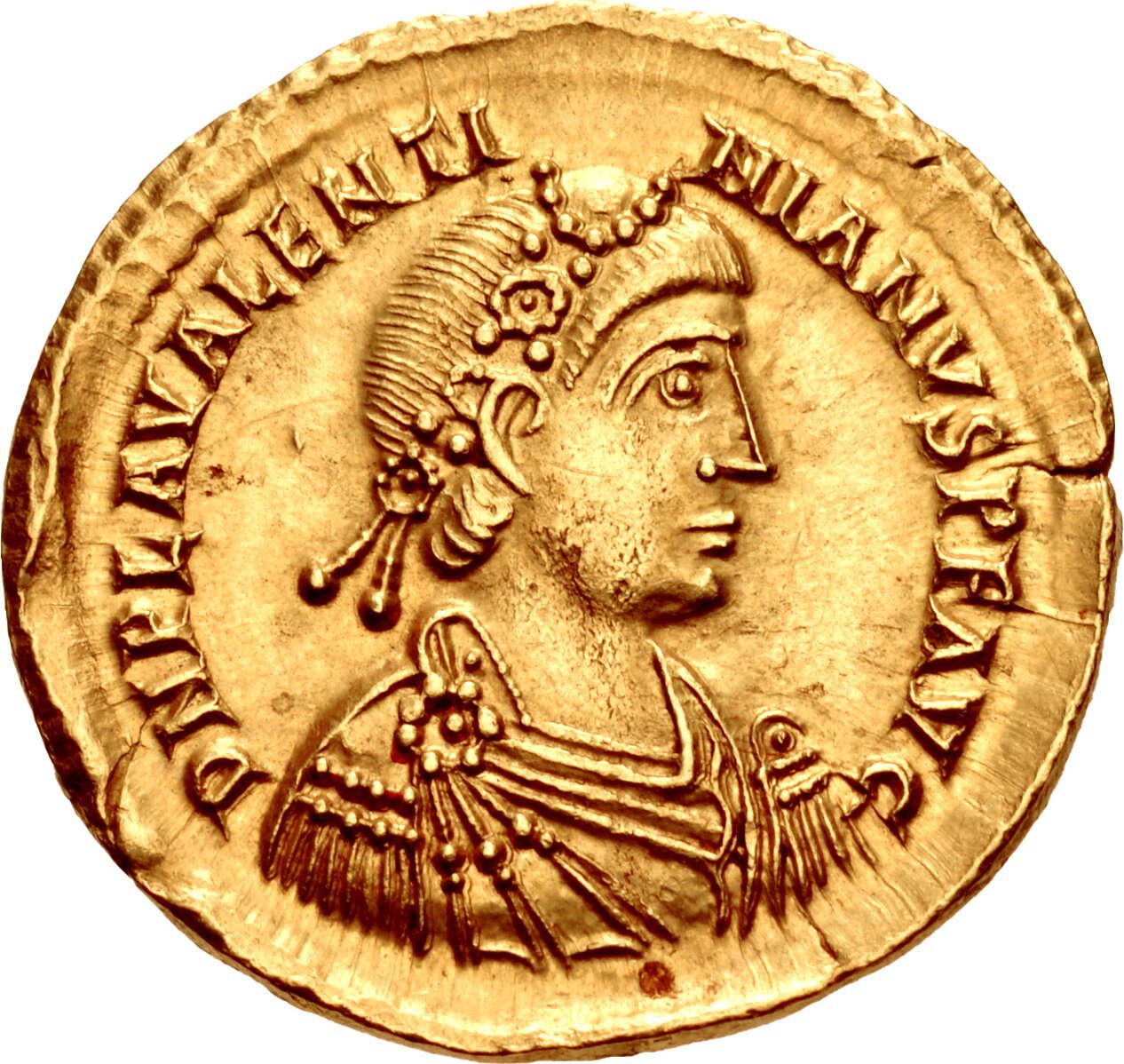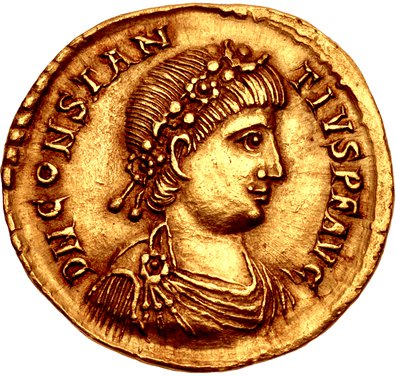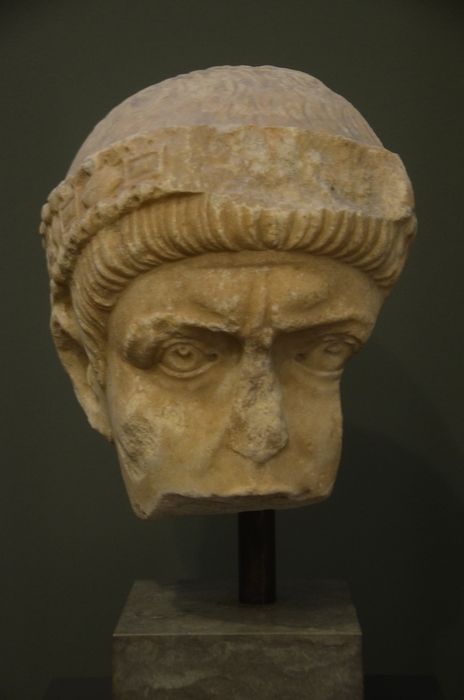|
Mediana (Bishopric)
Mediana is an important archeological site from the late Roman period, located in the eastern suburb of the Serbian city of Niš. It represents a luxurious residence with a highly organised economy. Excavations have revealed a villa with peristyle, thermae, granary and water tower. The residence dates to the reign of Constantine the Great 306 to 337. Although Roman artifacts can be found scattered all over the area of present-day Niš, Mediana represents the best-preserved part of Roman Naissus. In 1979, Mediana was added to the Archaeological Sites of Exceptional Importance list, protected by the Republic of Serbia. History Constantine the Great (280–337) was born and raised in Naissus. He erected a majestic residence in one of the luxurious suburbs of ancient Naissus, where he often resided and attended to state affairs. Historical records testify it was in Naissus that he passed several laws – in 315, 319, 324, and 334. After Constantine's death in 337, the im ... [...More Info...] [...Related Items...] OR: [Wikipedia] [Google] [Baidu] |
Medijana
Medijana ( sr-cyr, Медијана) is one of five city municipalities which constitute the city of Niš. It is the central and the most populous city municipality of Niš with the population of 85,969 inhabitants. Geography The municipality borders Pantelej municipality in the north, Niška Banja municipality in the east, Palilula municipality in the south, and Crveni Krst municipality in the west. Demographics According to the 2011 census, the municipality had a population of 85,969 inhabitants, with 81,327 in the eponymous settlement. Settlements The municipality consists of two settlements: Brzi Brod (population 4,642), a rural settlement and Medijana (population 81,327), a part of a larger urban settlement of Niš. Neighbourhoods The neighbourhoods composing Medijana municipality are: * Brzi Brod * Bulevar Nemanjića * Bulevar Djindjića * Čair *Centar * Duvanište * Kičevo *Marger * Medijana *Trg Kralja Aleksandra * Trošarina See also * Subdivisions of Serbia ... [...More Info...] [...Related Items...] OR: [Wikipedia] [Google] [Baidu] |
Vetranio
Vetranio (died c. 356) was a Roman soldier, statesman and co-Emperor, a native of the province of Moesia (in modern Serbia). Life and career Early life Vetranio was born in the Roman province of Moesia to low-born parents, sometime in the late 3rd century. His early professions are unknown, but it is evident that very early in his youth he joined the army. Though unlettered, Vetranio rose rapidly through the ranks from obscurity, being ultimately elevated by Constans to the governor of Illyria. He held this command for a very long period of time, and by the time of Constans' death (January 350) was considered an officer of both popularity and experience. After the murder of Constans by the usurper Magnentius, Constantina, Constans' sister and the daughter of Constantine the Great asked the aged Vetranio to assume the purple, which he did on 1 March. She most likely thought Vetranio could protect her family and herself against the usurper, and merely hoped to secure his fidel ... [...More Info...] [...Related Items...] OR: [Wikipedia] [Google] [Baidu] |
Nišava Valley
The Nišava or Nishava (Bulgarian and sr-Cyrl, Нишава, ) is a river in Bulgaria and Serbia, a right tributary, and with a length of also the longest one, of the South Morava. Course Bulgaria The Nišava originates in western Bulgaria, in the Stara Planina mountains (east of Kom Peak) near the village of Gintsi. Its source is close to the Serbian border. It enters Serbia after of flow through Bulgaria without receiving any major tributaries. Because it flows through Gintsi, the upper course of the river is known as Ginska (Cyrillic: Гинска). It first flows to the south, then sharply turns west into the Godech Kettle, passing through Razboishte, after which it forms a gorge. Coming out of the gorge, it reaches Kalotina, a major border crossing on the Bulgarian-Serbian border (Kalotina-Gradina), and continues to the west into Serbia. Serbia Flowing generally to the west for the remaining , it passes near Dimitrovgrad, Pirot, Bela Palanka, Niška Banja and ... [...More Info...] [...Related Items...] OR: [Wikipedia] [Google] [Baidu] |
Attila
Attila (, ; ), frequently called Attila the Hun, was the ruler of the Huns The Huns were a nomadic people who lived in Central Asia, the Caucasus, and Eastern Europe between the 4th and 6th century AD. According to European tradition, they were first reported living east of the Volga River, in an area that was part ... from 434 until his death in March 453. He was also the leader of a tribal empire consisting of Huns, Ostrogoths, Alans, and Bulgars, among others, in Central Europe, Central and Eastern Europe. During his reign, he was one of the most feared enemies of the Western Roman Empire, Western and Byzantine Empire, Eastern Roman Empires. He crossed the Danube twice and plundered the Balkans, but was unable to take Constantinople. His unsuccessful campaign in Sasanian Empire, Persia was followed in 441 by an invasion of the Eastern Roman (Byzantine) Empire, the success of which emboldened Attila to invade the West. He also attempted to conquer Roman Gaul (mode ... [...More Info...] [...Related Items...] OR: [Wikipedia] [Google] [Baidu] |
Valentinian III
Valentinian III ( la, Placidus Valentinianus; 2 July 41916 March 455) was Roman emperor in the West from 425 to 455. Made emperor in childhood, his reign over the Roman Empire was one of the longest, but was dominated by powerful generals vying for power amid civil wars and the invasions of Late Antiquity's Migration Period, including the campaigns of Attila the Hun. He was the son of Galla Placidia and Constantius III, and as the great-grandson of Valentinian I () he was the last emperor of the Valentinianic dynasty. As a grandson of Theodosius I (), Valentinian was also a member of the Theodosian dynasty, to which his wife, Licinia Eudoxia, also belonged. A year before assuming the rank of ''augustus'', Valentinian was given the imperial rank of ''caesar'' by his half-cousin and co-emperor Theodosius II (). The '' augusta'' Galla Placidia had great influence during her son's rule. During his early reign Aetius, Felix, and the ''comes africae'', Bonifacius all competed ... [...More Info...] [...Related Items...] OR: [Wikipedia] [Google] [Baidu] |
Galla Placidia
Galla Placidia (388–89/392–93 – 27 November 450), daughter of the Roman emperor Theodosius I, was a mother, tutor, and advisor to emperor Valentinian III, and a major force in Roman politics for most of her life. She was List of Visigothic queens, queen consort to Ataulf, king of the Visigoths from 414 until his death in 415, briefly empress consort to Constantius III in 421, and managed the government administration as a regent during the early reign of Valentinian III, until her death. Family Placidia was the daughter of Theodosius I and his second wife, Galla (wife of Theodosius I), Galla, who was herself daughter of Valentinian I and his second wife, Justina (empress), Justina. Galla Placidia's date of birth is not recorded, but she must have been born either in the period 388-89 or 392–93. Between these dates, her father was in Italy following his campaign against the usurper Magnus Maximus, while her mother remained in Constantinople. A surviving letter from Bisho ... [...More Info...] [...Related Items...] OR: [Wikipedia] [Google] [Baidu] |
Constantius III
Constantius III was briefly Western Roman emperor of the West in 421. He earned his position as Emperor due to his capability as a general under Honorius, achieving the rank of ''magister militum'' by 411. That same year, he suppressed the revolt of Constantine III, a Roman general who had declared himself emperor. Constantius then went on to lead campaigns against various barbarian groups in Hispania and Gaul, recovering much of both for the Western Roman Empire. Constantius married Honorius's sister Galla Placidia in 417, a sign of his ascendant status, and was proclaimed co-emperor by Honorius on 8 February 421. He reigned for seven months before dying on 2 September 421. Life Early life Constantius was born in Naissus, Moesia (present-day Niš, Serbia) of Illyrian origin. Constantius served as a general under Honorius, rising to the rank of ''Magister militum'' (Master of the Soldiers) by 411. Revolt of Constantine III In 411 Constantius was sent by Honorius to put ... [...More Info...] [...Related Items...] OR: [Wikipedia] [Google] [Baidu] |
Olympiodorus Of Thebes
Olympiodorus of Thebes ( grc-gre, Ὀλυμπιόδωρος ὁ Θηβαῖος; born c. 380, fl. c. 412–425 AD) was a Roman historian, poet, philosopher and diplomat of the early fifth century. He produced a ''History'' in twenty-two volumes, written in Greek, dedicated to the Emperor Theodosius II, detailing events in the Western Roman Empire between 407 and 425. His friends included philosophers, provincial governors and rhetoricians. He made several journeys in an official capacity, accompanied for twenty years by a parrot. He was a "convinced but discreet" pagan, who flourished in a Christian court, and whose work influenced several subsequent historians, including writers of ecclesiastical history. Life Olympiodorus was born between 365 and 380 in Thebes (modern Luxor, Egypt), in the Roman province of Thebaïd, into a curial family. Thebes at that point was a flourishing centre of literary learning, and a cradle of politicians and public figures. He received a classical e ... [...More Info...] [...Related Items...] OR: [Wikipedia] [Google] [Baidu] |
Valentinian I
Valentinian I ( la, Valentinianus; 32117 November 375), sometimes called Valentinian the Great, was Roman emperor from 364 to 375. Upon becoming emperor, he made his brother Valens his co-emperor, giving him rule of the eastern provinces. Valentinian retained the west. During his reign, Valentinian fought successfully against the Alamanni, Quadi, and Sarmatians. Most notable was his victory over the Alamanni in 367 at the Battle of Solicinium. His general Count Theodosius defeated a revolt in Africa and the Great Conspiracy, a coordinated assault on Roman Britain by Picts, Scots, and Saxons. Valentinian was also the last emperor to conduct campaigns across both the Rhine and Danube rivers. Valentinian rebuilt and improved the fortifications along the frontiers, even building fortresses in enemy territory. He founded the Valentinianic dynasty, with his sons Gratian and Valentinian II succeeding him in the western half of the empire. Early life Valentinian was born in 321 ... [...More Info...] [...Related Items...] OR: [Wikipedia] [Google] [Baidu] |
Corinth
Corinth ( ; el, Κόρινθος, Kórinthos, ) is the successor to an ancient city, and is a former municipality in Corinthia, Peloponnese, which is located in south-central Greece. Since the 2011 local government reform, it has been part of the municipality of Corinth, of which it is the seat and a municipal unit. It is the capital of Corinthia. It was founded as Nea Korinthos (), or New Corinth, in 1858 after an earthquake destroyed the existing settlement of Corinth, which had developed in and around the site of ancient Corinth. Geography Located about west of Athens, Corinth is surrounded by the coastal townlets of (clockwise) Lechaio, Isthmia, Kechries, and the inland townlets of Examilia and the archaeological site and village of ancient Corinth. Natural features around the city include the narrow coastal plain of Vocha, the Corinthian Gulf, the Isthmus of Corinth cut by its canal, the Saronic Gulf, the Oneia Mountains, and the monolithic rock of Acrocorinth ... [...More Info...] [...Related Items...] OR: [Wikipedia] [Google] [Baidu] |
Athens
Athens ( ; el, Αθήνα, Athína ; grc, Ἀθῆναι, Athênai (pl.) ) is both the capital and largest city of Greece. With a population close to four million, it is also the seventh largest city in the European Union. Athens dominates and is the capital of the Attica region and is one of the world's oldest cities, with its recorded history spanning over 3,400 years and its earliest human presence beginning somewhere between the 11th and 7th millennia BC. Classical Athens was a powerful city-state. It was a centre for the arts, learning and philosophy, and the home of Plato's Academy and Aristotle's Lyceum. It is widely referred to as the cradle of Western civilization and the birthplace of democracy, largely because of its cultural and political influence on the European continent—particularly Ancient Rome. In modern times, Athens is a large cosmopolitan metropolis and central to economic, financial, industrial, maritime, political and cultural life in Gre ... [...More Info...] [...Related Items...] OR: [Wikipedia] [Google] [Baidu] |







